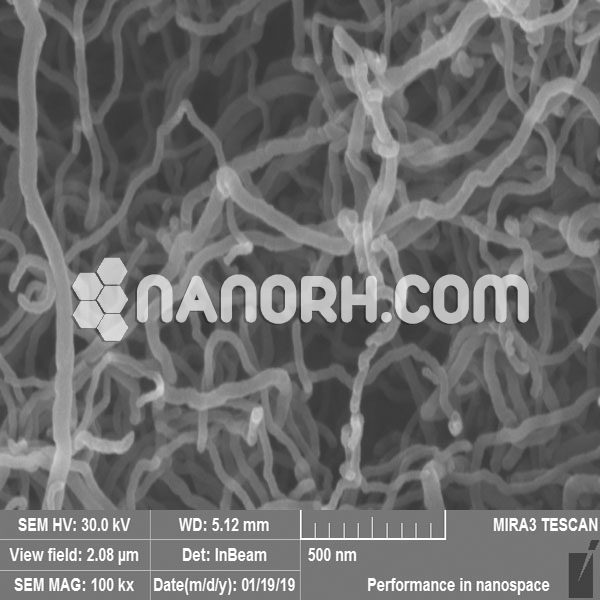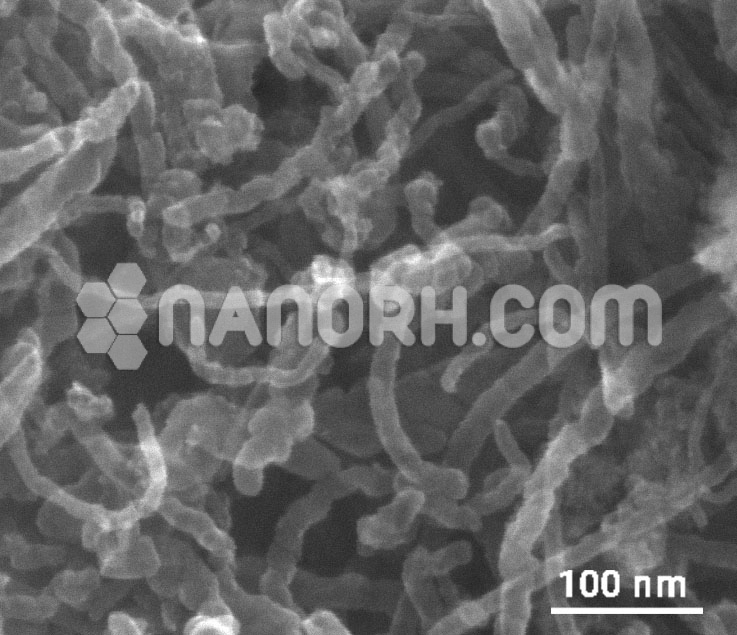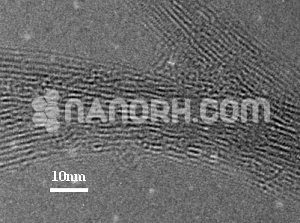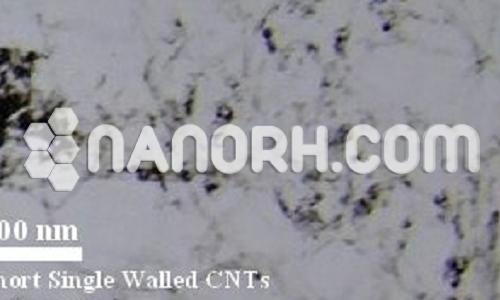PVP Coated SWCNTs / Dry Solid Dispersible SWCNTs, Purity >90%
Most single-walled nanotubes (SWCNTs) have a diameter of close to 1 nanometer, with a tube length that can be many millions of times longer. The structure of an SWCNTs can be conceptualized by wrapping a one-atom-thick layer of graphite called graphene into a seamless cylinder. SWNTs exhibit a richness in electronic behavior that may be exploited for molecular device applications. For example, metallic nanotubes may be used in resonant tunneling devices and also function as interconnects between device elements. Semiconducting nanotubes have already shown their utility in nanometer-sized field-effect transistors.
| PVP Coated MWCNTs / Dry Solid Dispersible MWCNTs | |
| Product No | NRE-36033 |
| CAS No. | NA |
| Purity | > 95 wt% |
| Average Diameter | 1.1 nm |
| Average Length | 5-30 um (TEM) |
| Special Surface Area(SSA) | > 380 m2/g (BET) |
| Tap Density | 0.14g/cm3 |
| True Density | 2.1g/cm3 |
| Electric Conductivity | > 100 S/cm |
PVP Coated SWCNTs
PVP Coated SWCNTs
Single-walled Carbon Nanotubes (SWNTs, SWCNTs) Application
Potential applications of carbon nanotubes are (1) additives in polymers; (2) catalysts; (3) electron field emitters for cathode-ray lighting elements; (4) flat panel display; (5) gas-discharge tubes in telecom networks; (6) electromagnetic-wave absorption and shielding; (7) energy conversion; (8) lithium-battery anodes; (9) hydrogen storage; (10) nanotube composites (by filling or coating); (11) nanoprobes for STM, AFM, and EFM tips; (12) nanolithography; (13) nanoelectrodes; (14) drug delivery; (15) sensors; (16) reinforcements in composites; (17) supercapacitor.
Most single-walled nanotubes (SWCNTs) have a diameter of close to 1 nanometer, with a tube length that can be many millions of times longer. The structure of an SWCNTs can be conceptualized by wrapping a one-atom-thick layer of graphite called graphene into a seamless cylinder. SWNTs exhibit a richness in electronic behavior that may be exploited for molecular device applications. For example, metallic nanotubes may be used in resonant tunneling devices and also function as interconnects between device elements. Semiconducting nanotubes have already shown their utility in nanometer-sized field-effect transistors.
Single-walled nanotubes are excellent conductors & the most likely candidate for miniaturizing electronics beyond the microelectromechanical scale currently used in electronics. The most basic building block of these systems is the electric wire.




